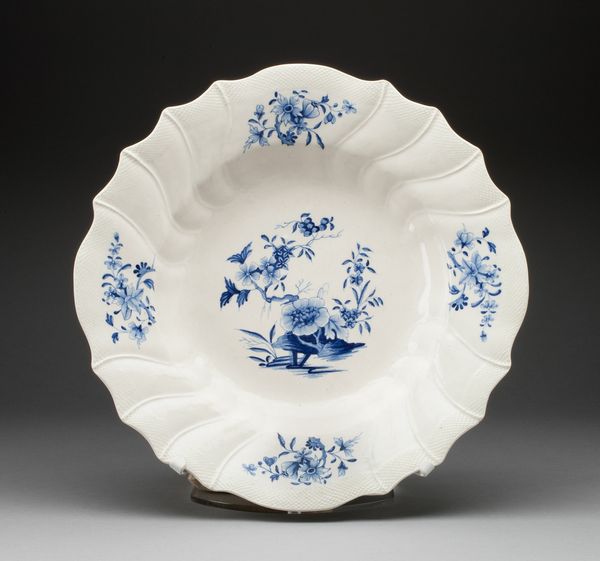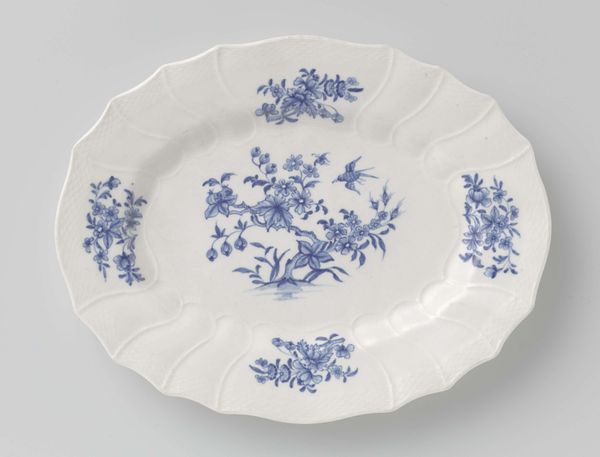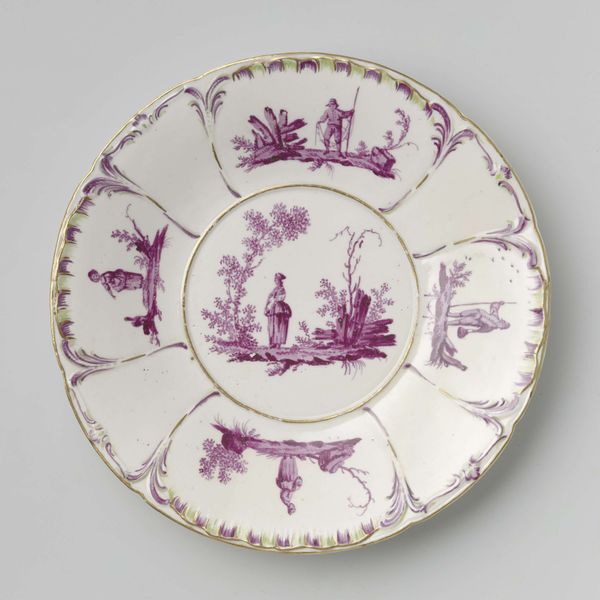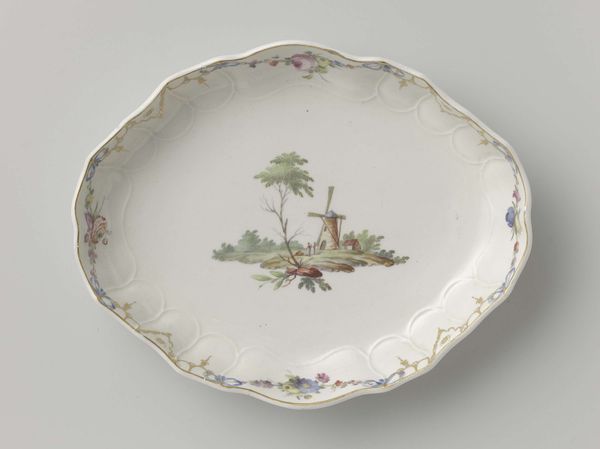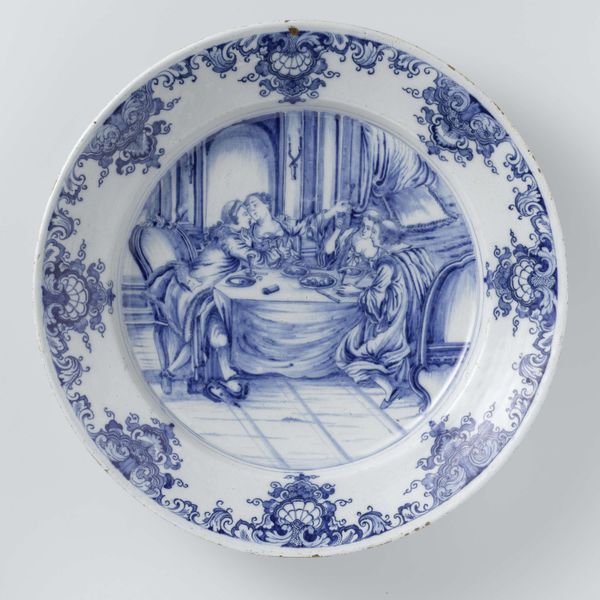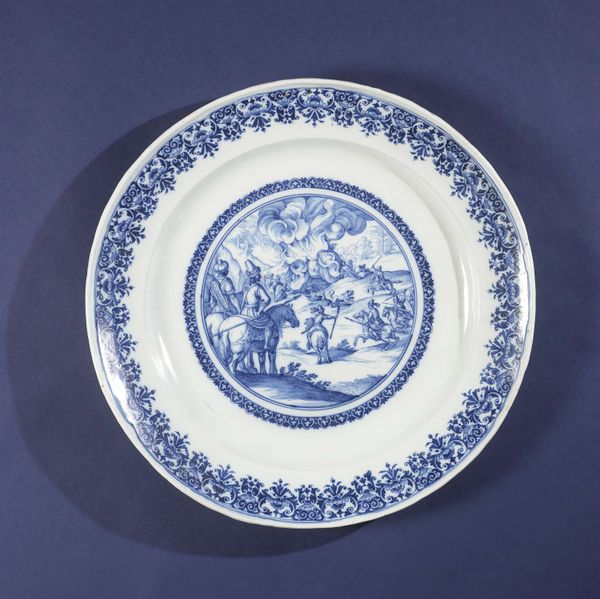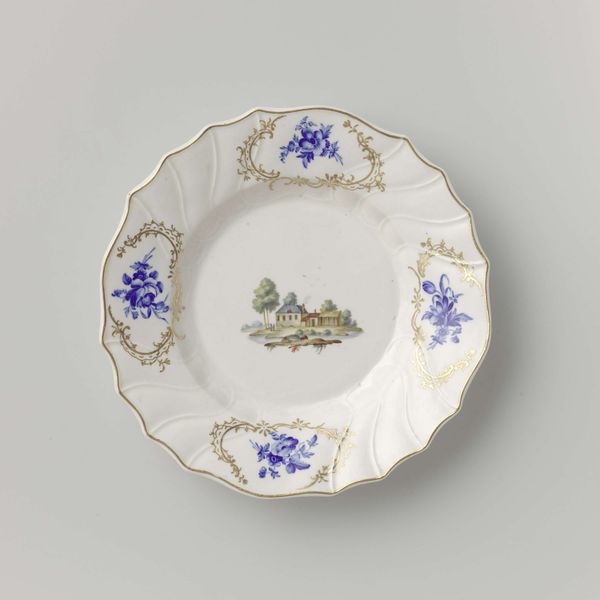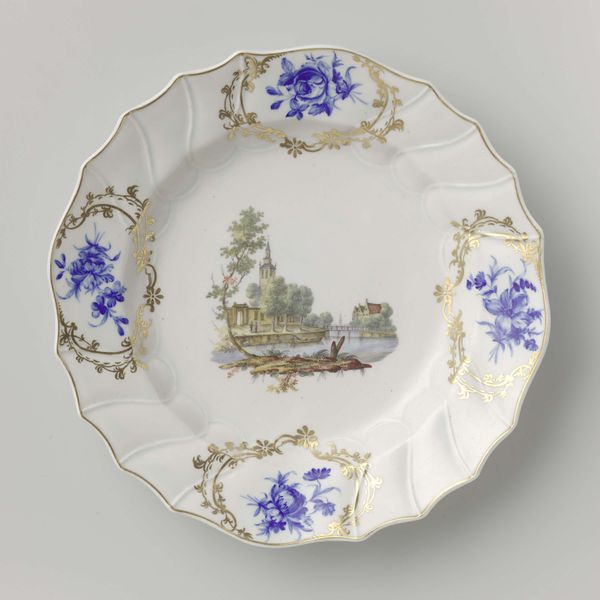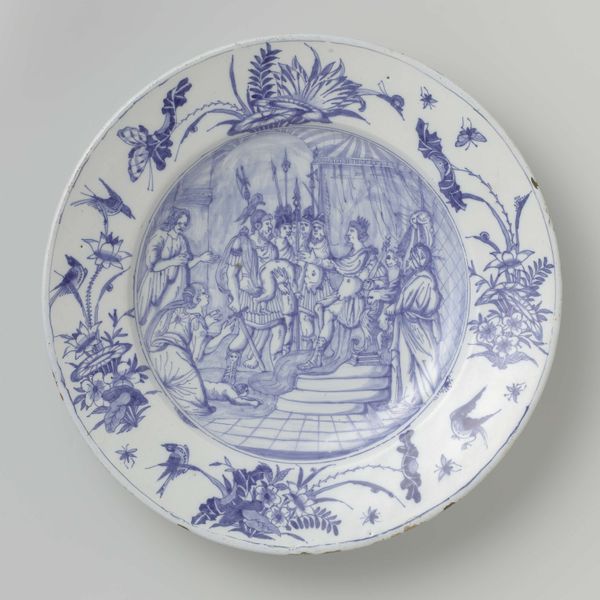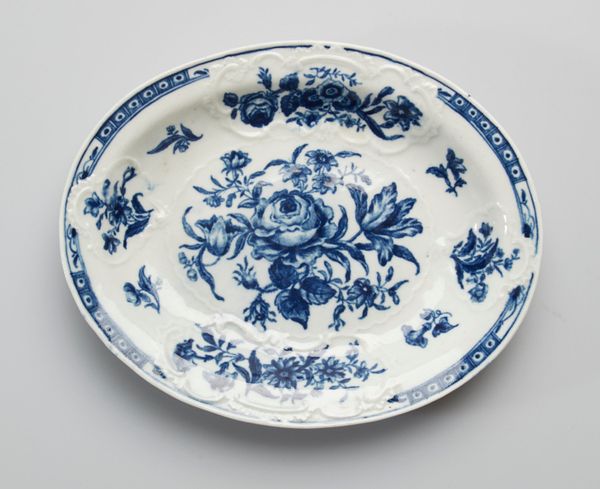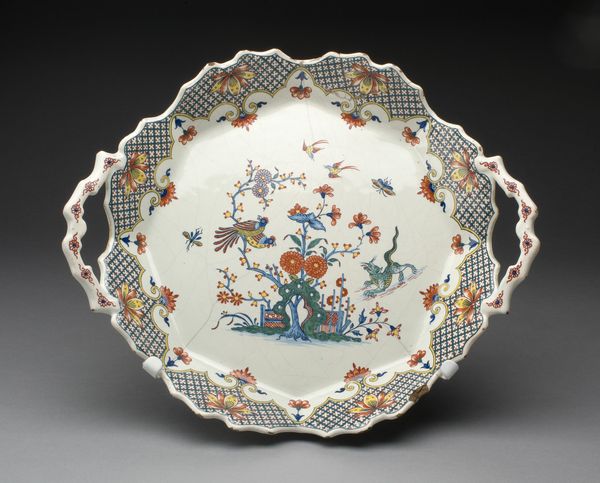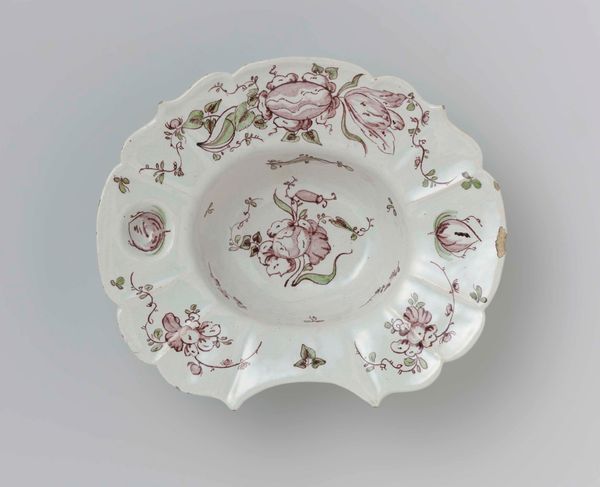
Slakom met op het plat een Chinees paar in een prieel c. 1760 - 1770
0:00
0:00
ceramic
#
ceramic
#
stoneware
#
orientalism
#
ceramic
#
genre-painting
#
rococo
Dimensions: height 7.8 cm, width 30 cm, depth 26 cm
Copyright: Rijks Museum: Open Domain
This faience slakom, or lettuce bowl, featuring a Chinese couple in a gazebo, was made by Johan van Kerkhoff in the Netherlands in the mid-18th century. This object presents an example of Chinoiserie, a European style inspired by Chinese motifs. It reflects the historical context of the Dutch East India Company, which facilitated trade and cultural exchange between Europe and Asia. In Dutch society, such objects signified wealth, cosmopolitanism, and a taste for the exotic. The bowl embodies the complex politics of imagery; European artists often created idealized and romanticized versions of Chinese life, reinforcing existing power dynamics. As historians, we explore period documents from trading companies, museum archives, and publications to better understand this cultural exchange. The meaning of art is always contingent on social and institutional contexts, and it is the art historian’s role to interpret the complex forces that shape its creation and reception.
Comments
No comments
Be the first to comment and join the conversation on the ultimate creative platform.

